Mysterious, magical and the example of modernization from the 1930s: the Voigtländer Virtus, the signature industrial design of a series of model names such as Prominent, Inos and Perkeo. All deep black with striking gearstyle knobs. A camera way ahead of its time and at the same time fitting the worrying changes in Germany. Virtus carries connotations of valor, manliness, excellence, courage, character, and worth, perceived as masculine strengths.
There are few cameras that exude history as well as the Virtus. It is rightly one of the most sought after vintage cameras. A collector’s item with great historical value. Voigtländer, along with Zeiss Ikon and Leica, belongs to the top of old German camera makers. The Viennese company Voigtländer dates back to 1756 and started its optical instruments factory in 1849 (five years after the word photography even came into existence). Voigtländer went on to produce the first Petzval portrait photographic lens in that time. The numerous experiences from the nineteenth century served the company well for all innovations in cameras. There was always a Voigtländer version of all available types, a camera with its own lens of the highest quality and capabilities. Often Voigtländer was the first or one of the first with a technical innovation: the Prominent from 1932 with a rangefinder, world’s first zoom lens in 1959. Loved by the general public, recognized by the professionals, the company remained standing until 1971. Voigtländer was taken over by Rollei and finally sold via Plusfoto in 1982 to the Japanese Cosina where Voigtländer lenses are still in production.
What about the Virtus? Meant as a more modestly camera, not as fancy as its big brother, the Prominent and yet a lot bigger as its small sister, the Perkeo, it saw the day of light in 1932. A 3×4 (120 medium format) viewfinder camera with automatic parallax correction, which was very uncommonly placed at the narrow side of the camera. It suggests its mean purpose was for portrait photography and you had to turn it anti clockwise for landscape. The Virtus features the excellent Skopar f/3.5 75 mm lens (which I did not see before) in the also excellent Compur shutter, ranging from B(ulb) and T(ime), the slow 1,2,5, 10th of a second up to the already fast times of 1/250s. The aperture features F3,5-F25, which enables a good variety of Depth of field.
The camera premiered with a new automatic parallax correction which is coupled to the lens, meaning it corrects the focus difference on close objects between the lens and the viewfinder. I am always amazed at how good compur shutters are after even 90 years. The fast times work almost perfectly, just the slow times take a little longer than usual. The same applies to the bright lens, which is still completely free of fungus or haze and can be easily detached and cleaned if necessary. Like the better medium formats, focusing is not done by turning the front focusing cell, but helical whereby the entire lens is moved from back to front.
The winding of a 6×4.5 film (through the upper knob) can be followed through the two red viewing glasses on the back of the camera. The film numbers on the backing paper for ‘6×9’ roll appear first in the left window and are reused for the next shot in the second window. On the back is a metal table with a depth of field scale and fitting shutter speeds and apertures. Focusing is done manually, that is, estimating the distance (zone focusing) and turning the knob on the camera to the correct distance. The shutter is operated on the lens.
The leather bellows seem to me to be the most vulnerable part and for that I prefer not to fold the camera anymore. But still, the camera lends itself well to practical use. The camera is all metal and solidly built. Nice also is the braided leather wrist strap that also should not be exposed to heavy use, but does contribute to the typical look and feel of the vintage Voigtlander Virtus. The Virtus is a real gadget from the early days of 20th century photography. There are not many (good) copies left to find, but if one pops up every now and then on a market or auction, don’t hesitate to buy one. Although I too think, in the words of Indiana Jones, ‘it belongs in a museum’.


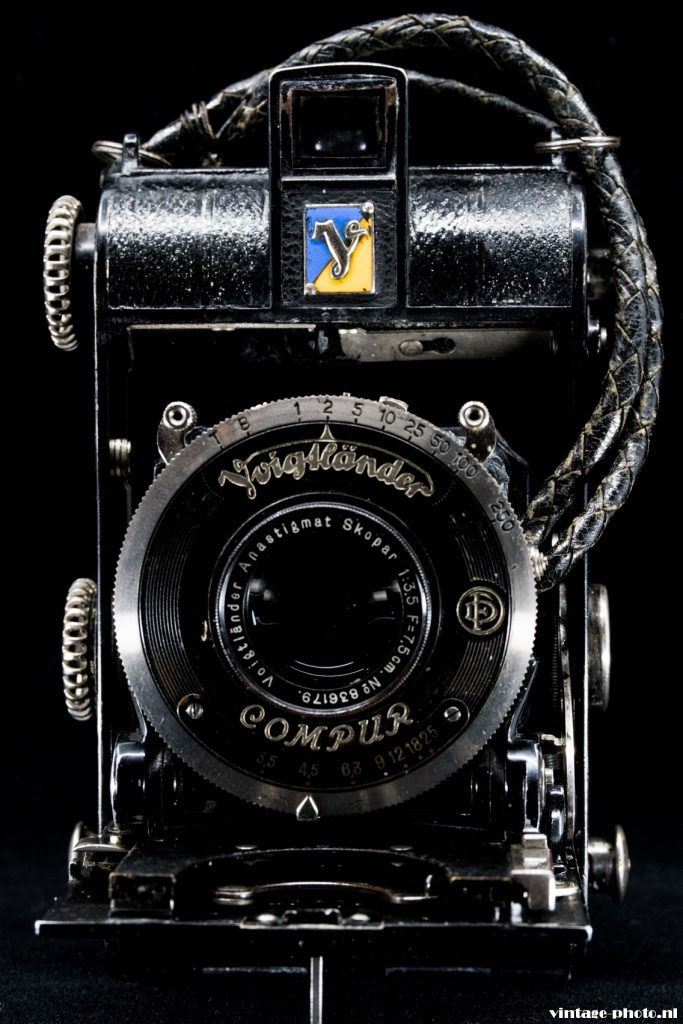

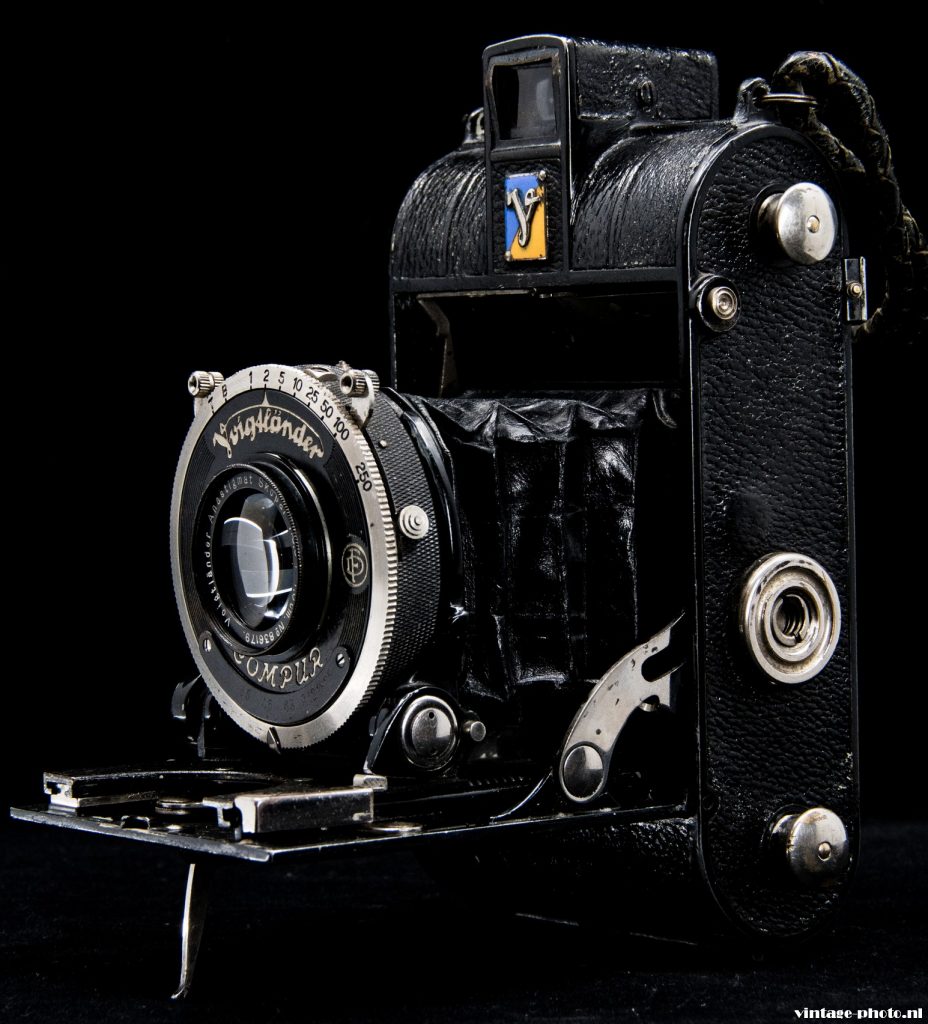
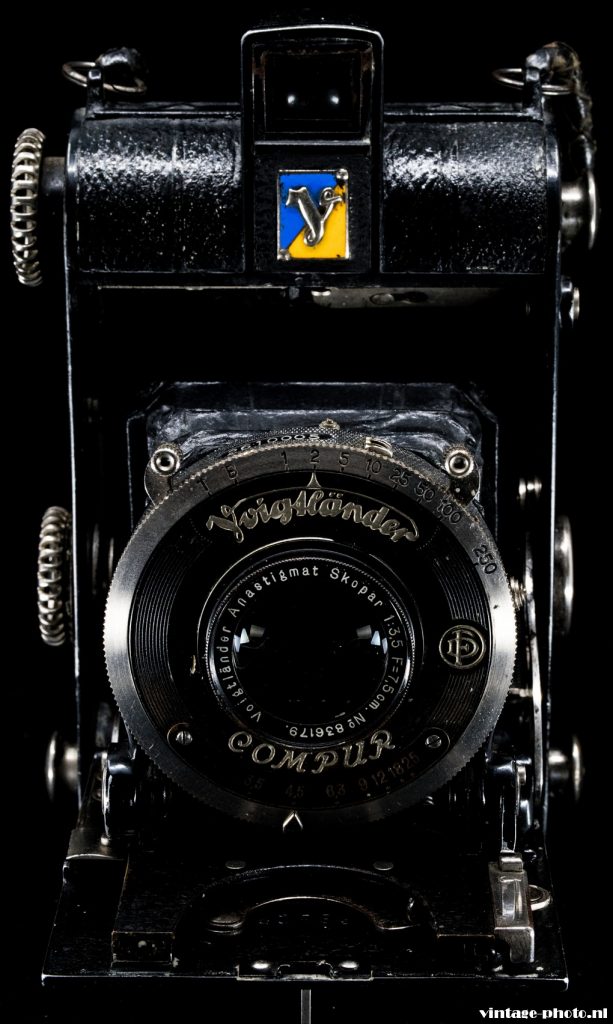
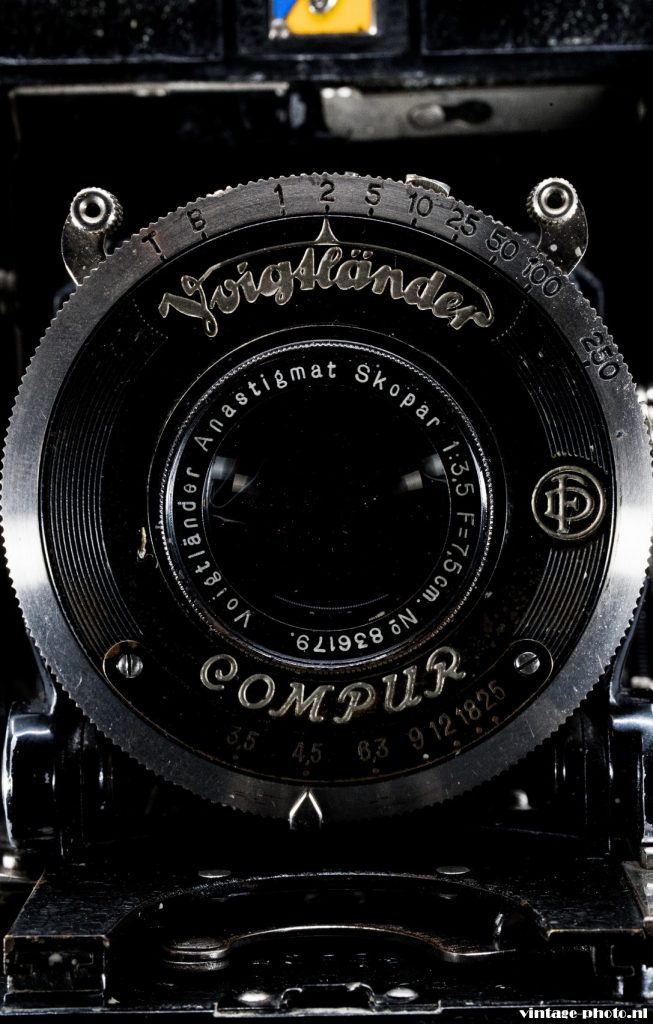
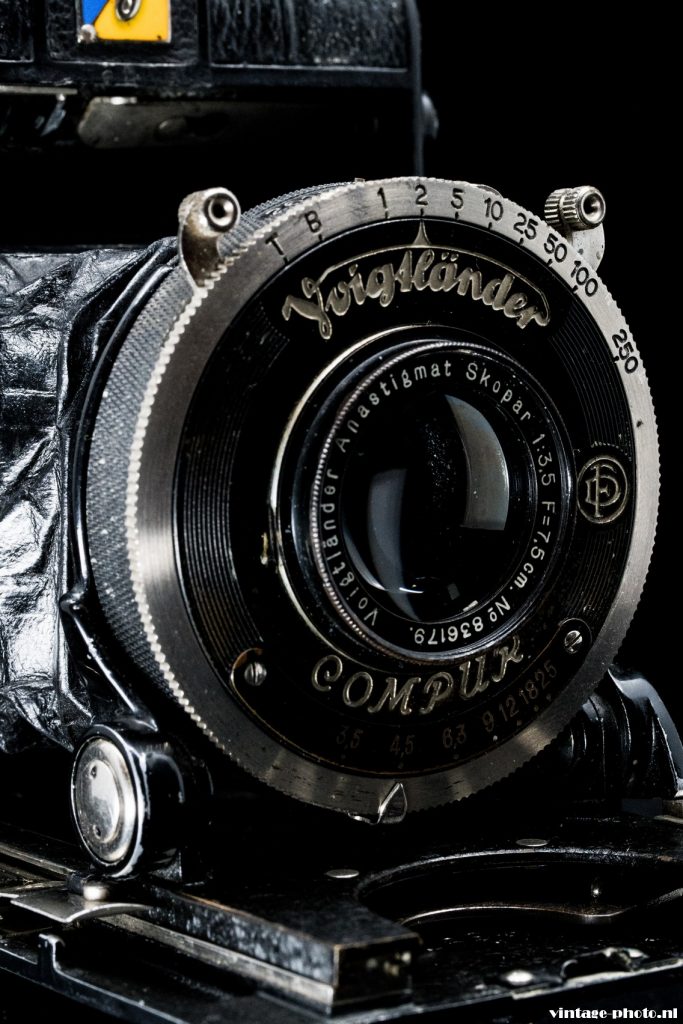
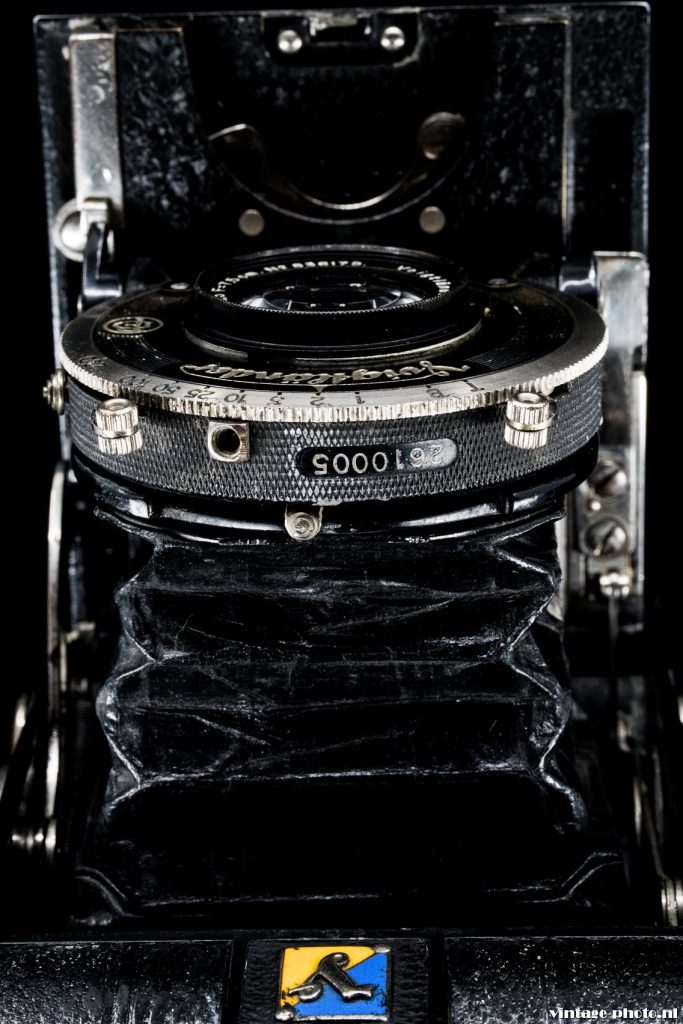
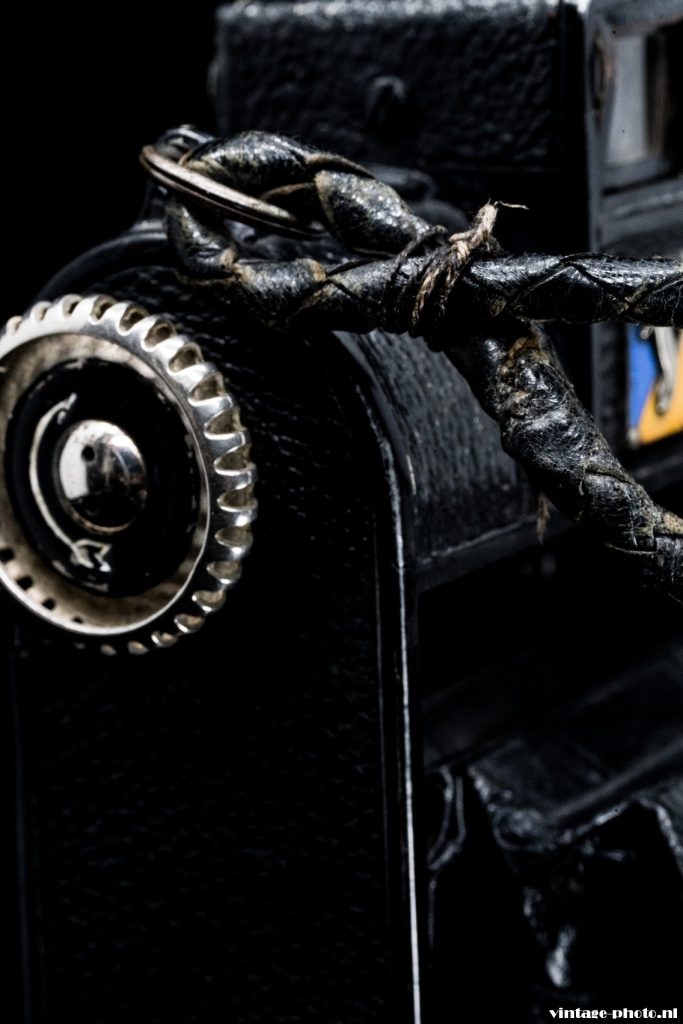
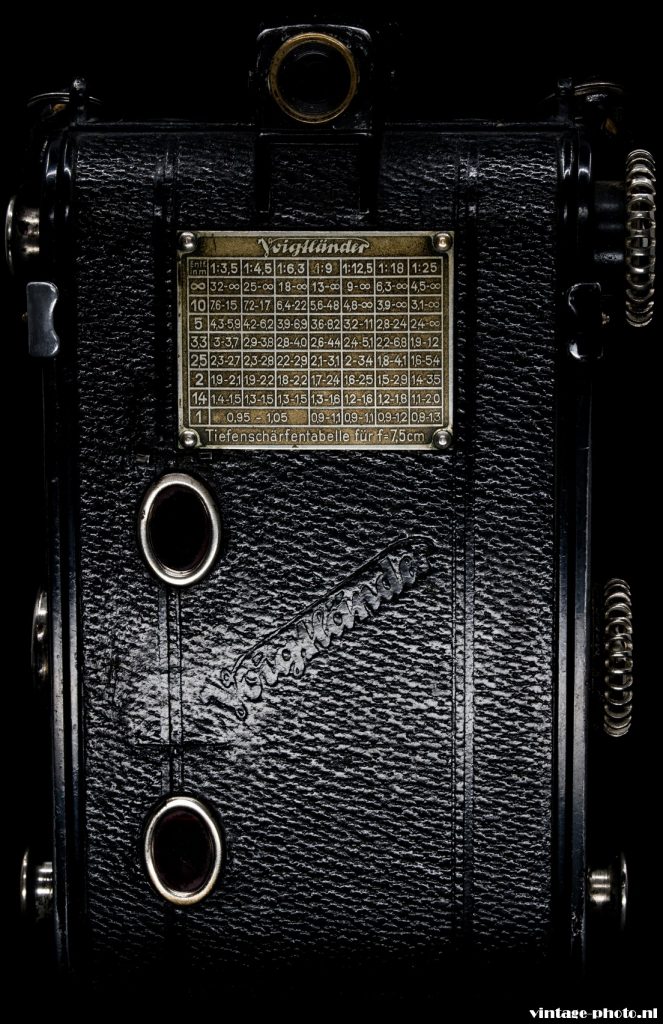
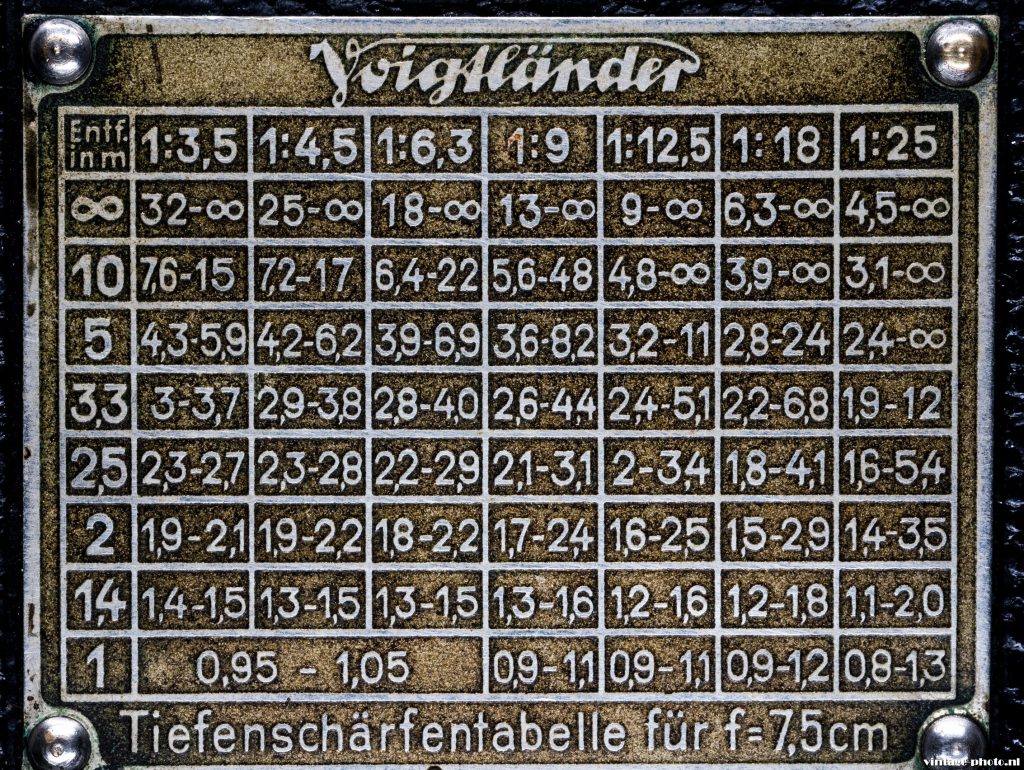
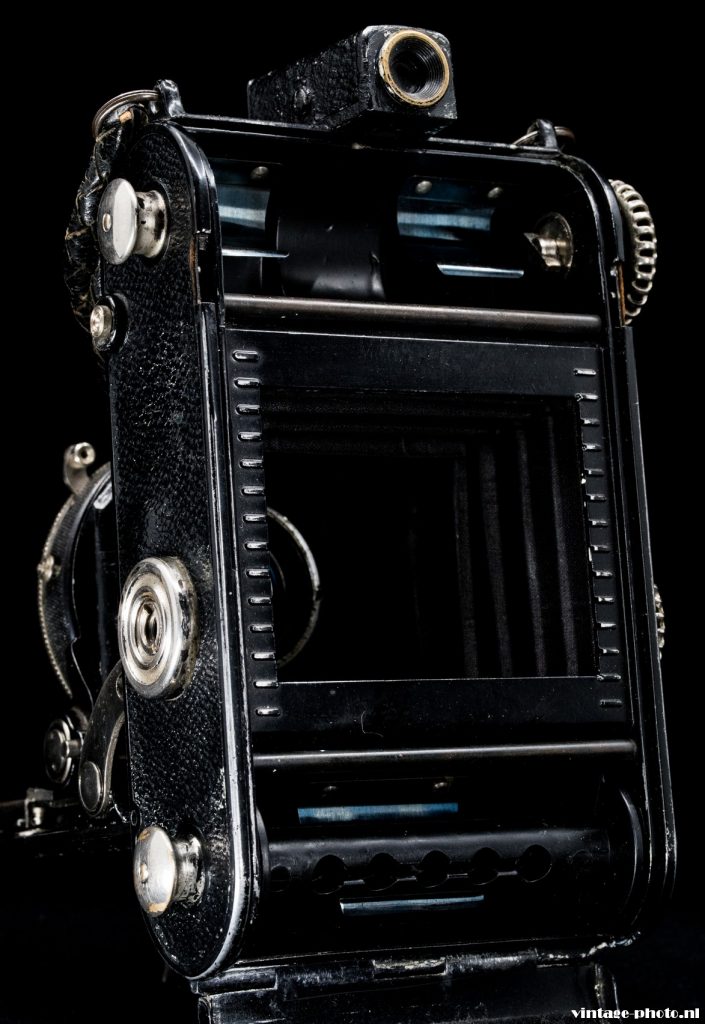
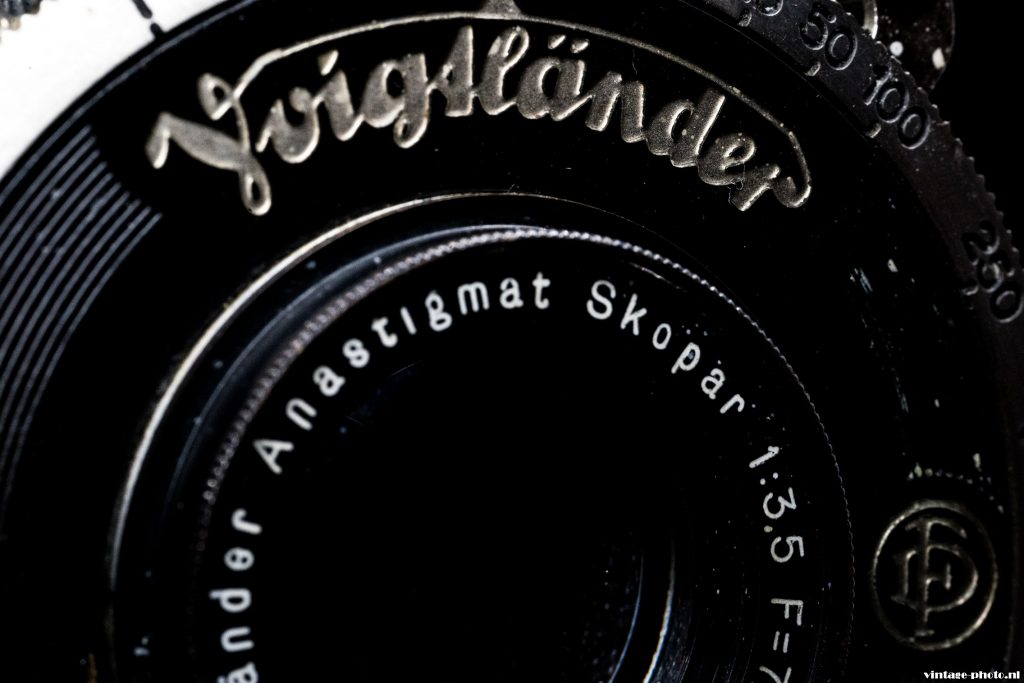
Hello, i have just purchased my second Virtus, the same spec as the above article. The reason for having two being the first model having the “lower” spec 4.5 Skopar (no problem there as many slower lenses have better resolution than their faster counterparts) and the three speed (1/25, 1/50, 1/100 s Embezet shutter. This shutter is a lovely thing with click stop detents for each speed and a seperate self timer with bright red paint! The problem being that this type has a self priming release (the release lever cocks the shutter just prior to firing) and the 1/100th sec (top speed) makes the whole camera jump a little and as i like to handhold my photography, i felt i could not get the best out of that 6 x 4.5 neg.
Hence aquiring a second camera with the Compur shutter – initial firing seems to produce less vibration but the first roll is yet to be finished so we shall see! Incidentally, the slightly older camera has a lovely fold out cranked support from the edge of the baseboard – the later camera has a much more conventional central fold out support – you can’t have everything!
I did have to spend a good few hours gaining access to the lens elements and viewfinder glass to make both cameras usable, resulting in a VERY clear and well defined viewfinder. As you probably know it’s parrallax corrected by the turn of the focus control – Wow – I believe the very first commercially available camera with this feature – and in 1932!
The lens element cleaning was straightforward but the viewfinder cleaning is a little trickier – i have been successful with two of these now so anyone with one of these and a foggy finder can email me and i can relay some instructions. (grphoto@hotmail.co.uk)
These cameras are quality instruments from a bygone age – if you see a nice one at a reasonable price – Buy It!
Hello again, – further to the above, i thought some instruction for my solution to the fogged finder might be helpful.
Looking at the front of the camera, below the viewfinder is the enamelled yellow and blue badge. Around this badge is a border of leather – this needs to be removed to gain access to a pair of screws – don’t worry – this is easy as the glue used in the 1930’s was water based. What i did was use cotton buds with 2-3 drops of water on them and dab around the leather until you can see it has soaked in. You just need enough water for the leather to soak up and no more – don’t drown it! Leave it for at least 15 mins pref 30 mins, make sure it’s not dried out again, if so add a little more. I then used a small jewellers screwdriver to pry away the leather from the edges, take your time and be careful with the surrounding paintwork.
You should end up with an intact border of leather, i then wrapped it carefully in between some kitchen paper and put it in the pages of a book so that it dries flat.
You should now be able to see two black headed screws – the slots of these screws will be full of debris/rust and need to be carefully cleaned out before any attempt at removal – this is important – if you just go ahead now and attempt removal without the heads of the screws as good as they can get, one slip with the screwdriver and things can become unrecoverable. Find a screwdriver that goes to the bottom of the slot and has minimal side to side movement in the slot – clean the slot out as well as you can before attempting removal – one trick that sometimes works for me is i try to tighten the screw a VERY SMALL AMOUNT before trying to untighten. TAKE YOUR TIME WITH THIS, it’s the most difficult bit by far and time spent here will reward you!
Hopefully you now have the cover plate/viewfinder outer frame in your hand. It may need a little prying out from the viewfinder frame, watch the outer viewfinder glass.
Now you have two larger screws to either side of the viewfinder housing to remove – easy! Now you should be able to wiggle out the viewfinder assembly – note and pref mark which way this goes up as it needs to spring the right way for the little “pusher” lever of the parallax mechanism. Access to all the glass faces should now be apparent.
Once all is sparkling clean again, just make sure the parallax system is working – you should just see the rear eyepiece and front viewfinder glass moving as you focus.
When you get back to the leather surround, just use a very small amount of PVA wood glue. Job Done!
I think you will agree that when cleaned, the Virtus has one of the best viewfinders in the folding (pre-war) world. ENJOY!!
Regards and Good Luck, Gary Roberts.